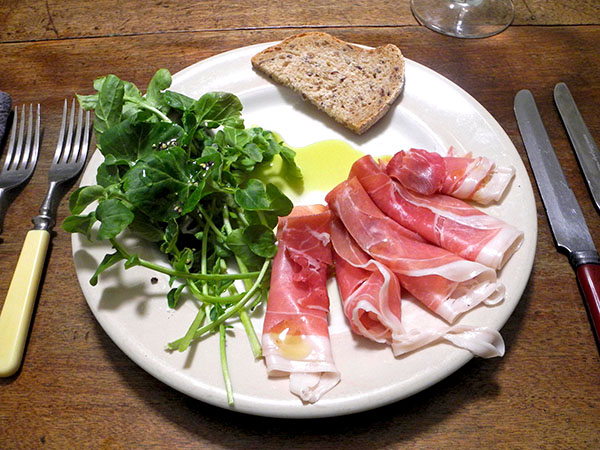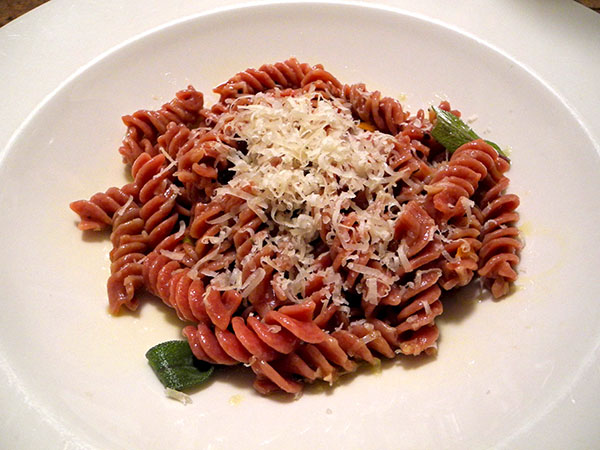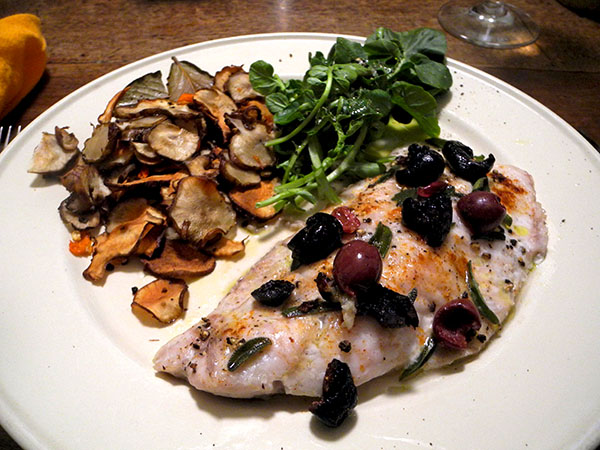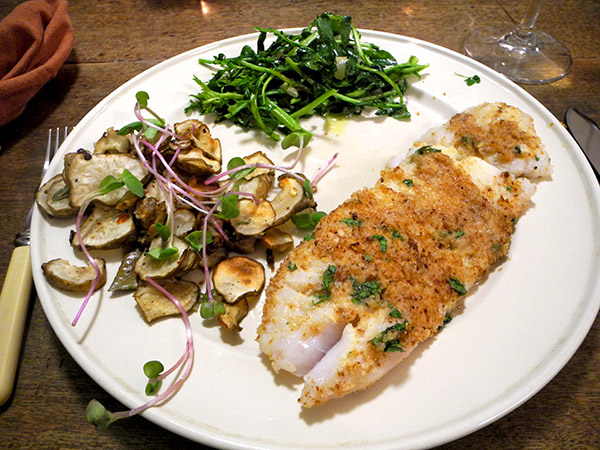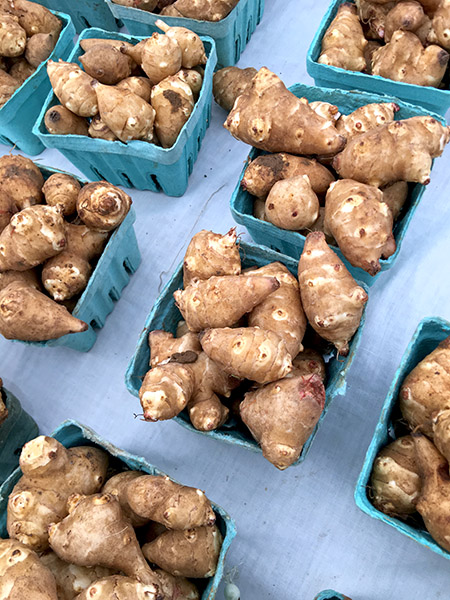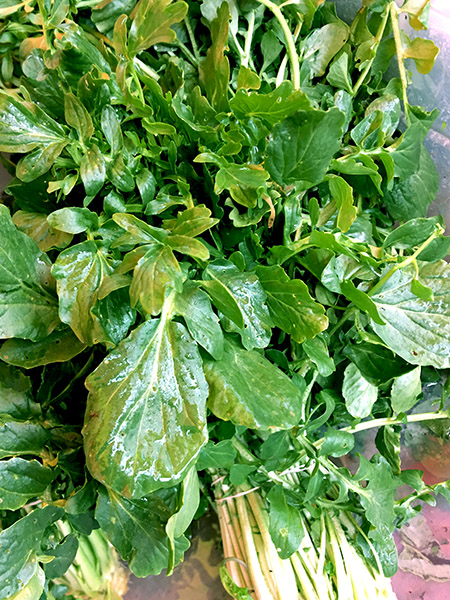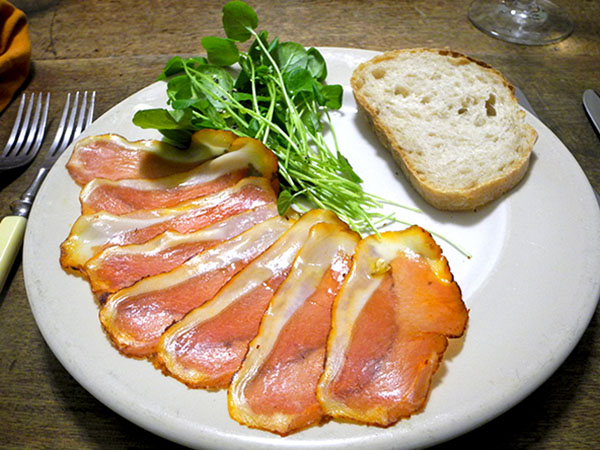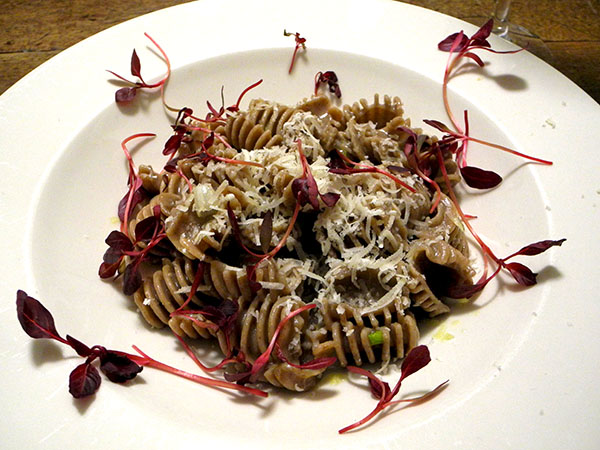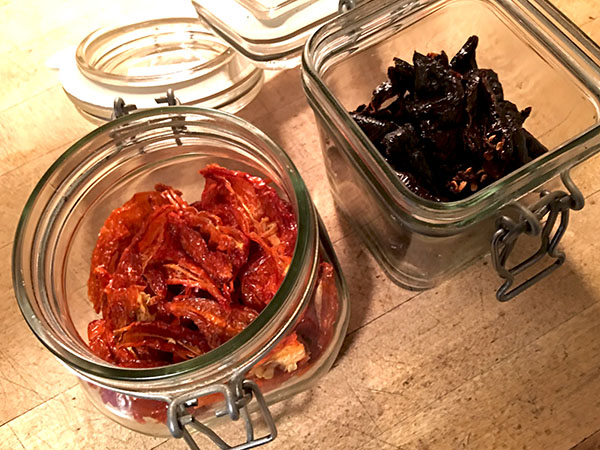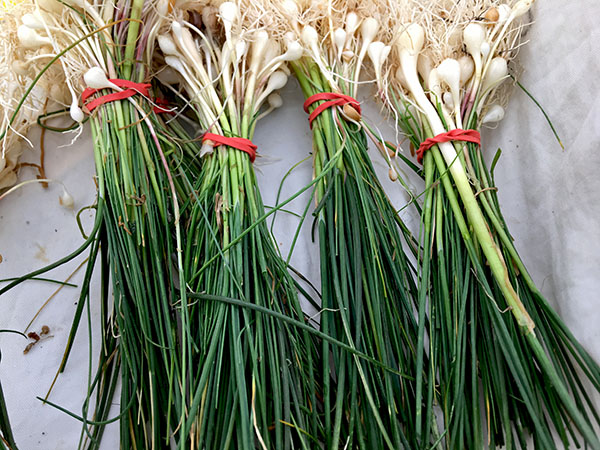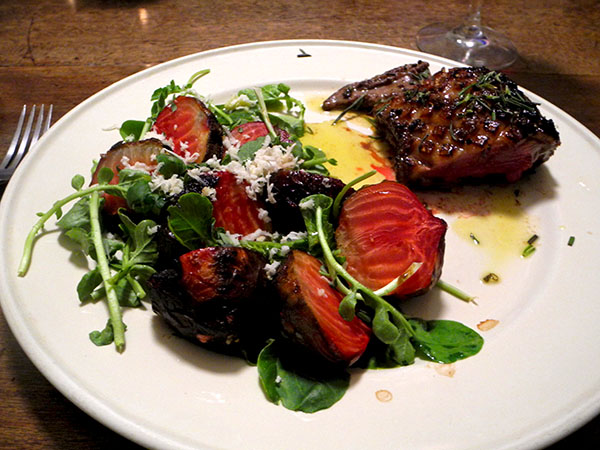
It’s now winter, but we still have local color on our table.
It seems especially right in the winter, but we enjoy duck at home often, usually duck breast, and all year round: It’s simple to prepare; it comes from a local farmer; the price is modest; it freezes well, and so it’s almost always in the larder; we love game, and it’s taste is the closet thing we can get to it in this country, unless the cook hunts, or has a friend who does; but, above all, it’s really, really delicious.
- * one 13-ounce duck breast from Hudson Valley Duck Farm, the fatty side scored in tight cross hatching with a very sharp knife, the entire breast then sprinkled top and bottom with a mixture of sea salt, freshly-ground black pepper, and a little turbinado sugar, left standing for almost an hour, then seared/pan-fried inside a small oval enameled cast iron pan over medium heat, the fatty side down first, for a total of 10 minutes or so, turning once, draining the oil after the first few minutes [to be strained and used in cooking later, if desired], removed when medium rare, cutting it into 2 portions to confirm that the center was of the right doneness, then left to sit for a couple minutes before being finished with a drizzle of juice from an organic lemon from Whole Foods Market, a little chopped rosemary from S. & S.O. Farm, and a drizzle of olive oil [NOTE: the tenderloin, removed from the breast, but placed in the marinade with it, was fried very briefly near the end of the period during which the rest of the breast was cooking]
- * eight medium-size chioggia beets from Campo Rosso Farm, trimmed and scrubbed, placed on a small unglazed Pampered Chef oven pan, tossed with a tablespoon or so of olive oil, one halved clove of Rocambole garlic from Keith’s Farm, the leaves from several branches of thyme from Stokes Farm, chopped, sea salt and freshly-ground pepper to taste, covered loosely with foil and baked for 20 minutes or so, when the foil was removed and the beets turned, roasted for 25 or 30 minutes longer, or until tender, removed from the oven and halved vertically, arranged on 2 plates on and around some upland cress from Paffenroth Gardens (whose quality had held up totally undiminished for almost 2 weeks!), both drizzled with a little olive oil and drops of a good Spanish Rioja vinegar, and finished with some horseradish root from Gorzynski Ornery Farm freshly grated on top [the recipe mostly follows one inside the book, ‘Italian Easy’; Recipes from the London River Cafe‘]
- the wine was a California (Napa Valley) red, Camille Benitah Cabernet Sauvignon Napa Valley 2015, from Naked Wines
- the music was the album, ‘The Works of William Mayer‘, played as a memorial to the composer who died less than one month ago.
